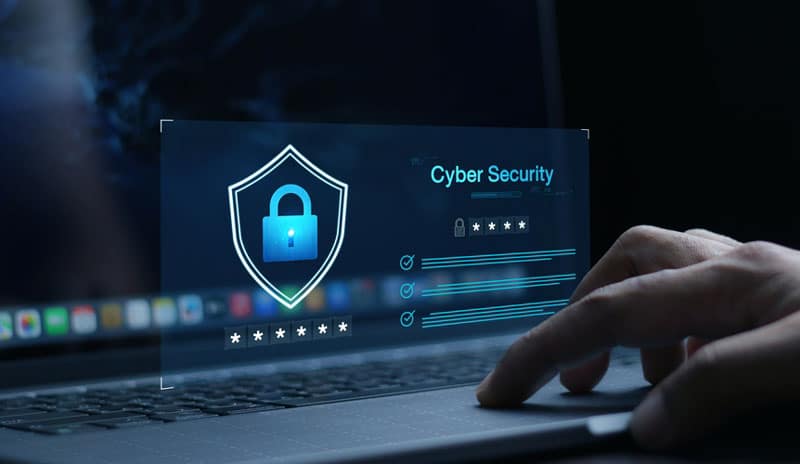How to Successfully Implement Cybersecurity Training in Your Company

There isn’t a magic formula for closing the gaps in your data security and compliance. A company’s ability to prevent data breaches is primarily dependent on its ability to communicate internal messaging effectively throughout the organization. Your organization is more vulnerable to a data breach if your data security procedures are unclear. So, let’s go through the steps to build a strong cybersecurity training program that works for your company.
Steps To Implement Cybersecurity Training in Your Company
Drawing your colleagues’ attention to cybersecurity may seem a challenging task. In reality, everything you need is to choose the right strategy to address potential threats in your workplace.
Step 1: Get Your Management Onboard
Getting management on board with cybersecurity awareness training might not require much convincing as it becomes increasingly standard operating procedure.
Senior management can benefit from approving a training program and supporting changes to current policies or procedures. Developing a culture that is security-conscious goes beyond simply completing a few courses on cybersecurity awareness. To do that, you will want assistance from external sources other than the IT department.
Step 2: Identify Your Weak Points
When creating cybersecurity training programs for your business, start by analyzing the current state of overall security and work your way down to the weakest areas of your system.
Are there any security flaws in the way that payments are processed? Emails between offices? Are you transferring files to a public file storage service or the cloud? Do you document all the transactions? Choose the weakest link and center the beginning of your training around it.
Step 3: Use Microlearning and At-Hand Resources
It’s likely that your organization already has access to training materials. If so, avoid developing new ones and stick to the internal resources. Also, try to figure out the most suitable learning style for your team. If your staff members learn best via online courses, don’t pack them into a room and force them to sit through a four-hour presentation.
Apply the concepts of microlearning to provide workers with essential bite-sized information covering the most important cybersecurity advice.
When it comes to recent email and phone phishing scams, be specific. Not even the most knowledgeable staff members may be fully aware of every fraud. Here, too, microlearning can be helpful.
Step 4: Educate Employees on Essential Cybersecurity Tools
Tools are a big part of cybersecurity, so your employees should be able to understand their importance in protecting the company’s data. Below are some of the key tools to be incorporated into the training:
- VPNs (Virtual Private Networks): When working remotely, most employees use their phones to access company resources. iOS VPNs are great for secure remote access. Make sure that when employees work from home, they use VPNs to keep company data safe. Train employees to always use a VPN when working remotely. Explain how VPNs work and why they’re essential for keeping information private.
- Firewalls: Firewalls act as a barrier between your company’s network and the outside world. They block unwanted access. Your employees should know how firewalls work and why they’re important. While the IT team manages firewalls, employees must still understand their role. They should avoid actions that could weaken these defences, like visiting unsafe websites or downloading suspicious files.
- Encryption Software: Encryption turns data into coded language. Only people with the correct key can read it. Teach your employees how to use encryption software when sending or storing sensitive information. This is especially important when sharing data via email or cloud storage.
Step 5: Get Your Staff Ready to Handle a Data Breach
Attacks involving data breaches are unavoidable. You’ll be happy you have a backup plan in place in case such attacks succeed and compromise your data. The type of security mandates you adhere to could result in hefty fines. Data breach fines have been so high that they have forced companies out of business.
Different compliance regulations might call for varying breach protocols, particularly concerning how to notify the recipient and the timing of the notification. Start distributing information and executing your data breach responses promptly to help implement security awareness.
Step 6: Monitor and Share the Results of Your Training Metrics
Show the effectiveness of the processes, policies, training, and other initiatives you’ve put in place. Monitor your progress on the cybersecurity awareness training program and make changes if you’re not satisfied with the results.
It’s important to update your employees about new scams and set up preventive measures to safeguard your company’s data. The bottom line is to follow up on your training sessions and make sure your employees are prepared for the worst.

Success Lies in Continuity
Cybersecurity training is a must for every business. By following these steps, you can build a program that fits your company’s unique needs. Start by understanding the risks, and the sooner you start—the better the outcome.
Create tailored training sessions about essential tools. Make learning an ongoing process, and build a culture where everyone values security. Finally, keep an eye on the program to make sure it’s effective. With the right training, your company can mitigate any cyber threat, because it won’t come unexpectedly.
Bring the best of the CEOWORLD magazine's global journalism to audiences in the United States and around the world. - Add CEOWORLD magazine to your Google News feed.
Follow CEOWORLD magazine headlines on: Google News, LinkedIn, Twitter, and Facebook.
Copyright 2025 The CEOWORLD magazine. All rights reserved. This material (and any extract from it) must not be copied, redistributed or placed on any website, without CEOWORLD magazine' prior written consent. For media queries, please contact: info@ceoworld.biz








